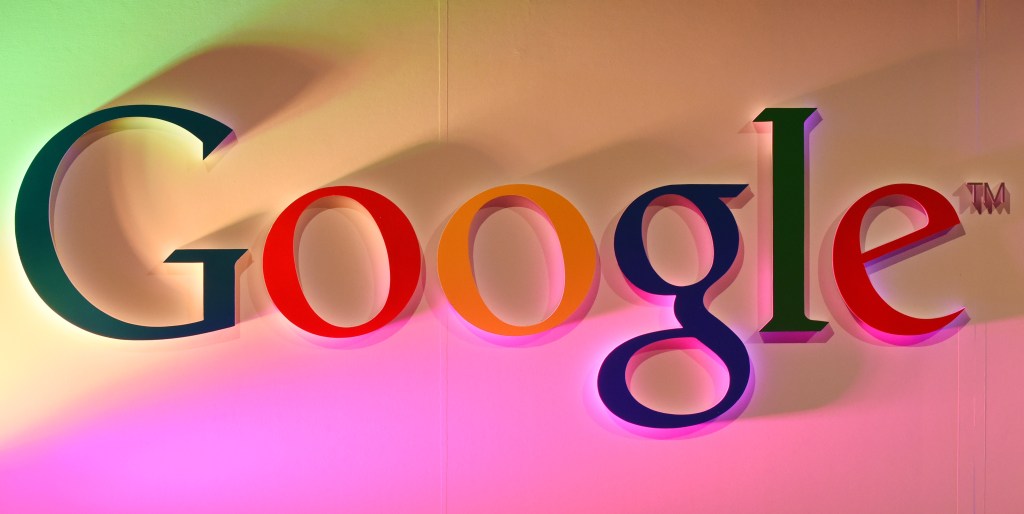Joyce Chou
Copywriting isn’t just about combining the right words to sell your product — it’s how your messaging connects with users. By improving a few words, your copy can better convince people to become customers.
At Demand Curve, we’ve helped thousands of startups get traction with their first customers and scale their growth. Along the way, we’ve noticed several common conversion mistakes on landing pages, ads, emails and elsewhere that make your copy less persuasive.
For better results, here are 10 common copywriting mistakes to avoid, plus, how to fix them.
Writing in passive voice
Whenever possible, write in the active voice. It emphasizes the subject of a sentence and generally makes your copy shorter and easier to follow.
Consider the difference between these two sentences:
- Resolve all of your urgent issues with our product. (Active)
- All of your urgent issues can be resolved with our product. (Passive)
In marketing copy, active voice is especially important for describing your product benefits. Write them as action statements with your customer as the main character. Framing them in this way, rather than as things or experiences they receive, makes your product benefits easier to visualize.
Here are a few examples:
- Netflix: Watch anywhere. Cancel anytime. (Not “Content can be watched anywhere. Your subscription can be canceled anytime.”)
- Goodreads: Meet your next favorite book. (Not “Your next favorite book is waiting to be discovered.”)
- Mint: Put an end to late fees. (Not “Late fees will end.”)
For more impact, use vivid and descriptive verbs.
Generic wording
Writer and literary critic F. L. Lucas famously suggested “writing to serve people rather than impress them.” Yet many copywriters use generic phrases like “#1 software,” “the best platform,” and so on to impress readers without actually providing helpful information.
As Lucas says, your copy should serve readers. This is best done by adding specificity. Avoid using generic wording, like hyperbolic claims, and instead speak to your readers’ exact needs.
Help TechCrunch find the best growth marketers for startups.
Provide a recommendation in this quick survey and we’ll share the results with everybody.
Here are a few ways to add more specificity to your copy:
Address the objection most relevant to your target persona
Anticipate and then respond to how prospects might push back against your offer. Example: Audible promises “A friendly email reminder before your trial ends” — offering peace of mind to people wary of unexpected subscription charges.
Use the second-person point of view
Relate products directly to your audience. Example: “We’re always talking to couples like you,” the wedding planning company Zola’s about page says. “You two are the heart of everything we do.” This makes Zola’s copy feel more like a personal conversation than if it were to refer more broadly to brides and grooms in the third person.
Incorporate examples
Think of scenarios where your product might be used, or how real customers benefited from your product. Examples help your prospect understand how your product fits into their world — notice how the examples in the last two bullet points provide a detailed point of reference for how to apply our tips.
No defined goal or outcome
Complex products often have a long sales cycle because there’s so much information prospects need to digest. This can result in copy that lacks clear next steps.
Effective copywriting moves people toward action. After all, it’s written for the sake of persuading. If there’s no outcome, it’s not copy; it’s literature.
To avoid this trap, work backward from your desired outcome: What you’d like your audience to do after reading your content. Make each sentence move the prospect closer to taking action.
The HR software company Gusto provides a good example here, using copy like:
“Our plans were built to fit your unique needs. Let’s start with a few quick questions.” — Two CTA buttons appear below this copy. One kickstarts a questionnaire; the other (“Learn More”) directs users to a detailed product page.
“Let’s find the right plan for your business.” — Under this text, users are prompted with a “Talk to sales” button.
“Step 1: Pick a plan that works for your business and budget.” — Gusto links to its pricing page, which includes a comparison table of its products.
Misaligned motivation
We like to think of ourselves as rational creatures, but the reality is we’re not. This is especially apparent in our consumption habits: We often buy with emotion but justify our purchases with logic.
What does this mean for your copywriting? You should build your copy around your prospects’ underlying desires and emotional motivations.
For example, take a look at the headlines used on Wix and Squarespace’s homepages.

Wix’s headline, “Create a website you’re proud of,” taps into users’ desire for not just a website but a website that looks good.

By comparison, Squarespace’s headline, “Everything to sell anything,” feels a lot less emotionally aligned with users’ goals. It’s trying to make the point that it offers a full suite of tools to sell any product or service (an example of using logical reasoning to persuade prospects).
But unless they own multiple businesses or sell a wide range of products, a lot of prospects might not actually need all those tools. Their bigger priority is creating an aesthetically pleasing site, which Wix immediately makes a case for with its headline.
Complicated wording and jargon
Readability describes how easy it is for someone to understand a piece of written text. When an article has low readability, it’s hard to understand and vice versa.
Why does this matter? Research shows that the average American best comprehends content written at the seventh-grade reading level — the level of the average 12- or 13-year-old. Text that crosses over into anything higher becomes less understandable.
Your copy should never confuse readers or make them feel dumb. No one wants to spend time trying to read something, after all.
Consider how analytics tool Hotjar communicates what its software does on its product page. It uses phrases like:
- Understand how users really experience your site.
- Visualize user behavior.
- See where users click, move and scroll.
This kind of language is simple and easy to understand. It’s much more effective than phrases like “heatmapping and conversion funnel technology” or “website visualization software” — terms that can be overwhelming to readers new to analytics tools.
So write with the same vocabulary you’d use when talking with a 12-year-old. Use Hemingway App, Grammarly or a similar tool to judge the readability of your copy.
Long sentences
This relates to our earlier point about readability. Compared to long sentences, short ones are easier to understand. They also don’t take a lot of commitment to finish.
The fix here is to present one idea per sentence, and remove redundant words.
Take a look at these examples of short and punchy copy from around the web:
- Morning Brew: Stay informed and entertained, for free.
- HubSpot: Create delightful customer experiences. Have a delightful time doing it.
- Tuft and Needle: See, feel and sleep on the difference.
Not speaking your audience’s language
Good copy communicates information, but great copy leaves a lasting impression. One way to make your copy resonate more with your target audience is to use their vocabulary.
One of the best examples of this is canine-centered subscription service BarkBox. It uses vocab like “zoomies” and “doggos” to speak to its target audience of enthusiastic dog owners.

Similarly, sports equipment retailer Brooks Running incorporates running lingo into its product copy. It highlights shoes best suited for “overpronation,” “neutral running gaits” and more terms specific to those in the running community, its target audience.
To learn your ideal customer’s vocabulary:
- Check out Facebook groups, subreddits and other communities where your audience hangs out.
- Look at sales calls, customer reviews and service tickets.
- Interview prospects.
Make note of the unique words and phrases commonly used, and then incorporate them into your copy.
Weak headlines
Strong headlines invite people to keep reading. There are two defining traits that separate strong headlines from the weak:
- They pique readers’ curiosity.
- They promise some kind of value.
This applies not just to landing page headlines but also to email subject lines, blog post headers and more.
To write a more eye-catching headline, try one of the following tactics:
- Create a sense of fear or urgency: “10 things you didn’t know could hurt your credit.”
- Simplify a complicated or intimidating topic: “The minimalist’s guide to Bitcoin.”
- Make its value obvious: “The best travel hacks that save you time, space and money.”
- Acknowledge a common objection: “How to speak like a pro even with stage fright.”
No social proof
Readers can spot a sales pitch from a mile away, and they don’t like them. That’s because overt sales pitches often come off as one-sided or pushy. People are also skeptical that they may exaggerate or stretch the truth.
Adding social proof — evidence that other people value your product — prevents people from thinking your copy is pushy or fake. It lets others do the selling for you.
There are several other ways to incorporate social proof into your copy:
- Use snappy lines from customer reviews as headers.
- Mention how many customers you serve.
- Quantify your results or benefits.
- Call out the names of well-known customers that use your product, like influencers or major brands.
- Mention any awards or top rankings your company or product has received.
Here are a few examples:
- Wise: “We move over $7 billion every month and save people and businesses $3 million in hidden fees every day.”
- Mailchimp: “Mailchimp was recently named one of the best global software companies of 2021 by G2.”
- Headspace: “Join millions getting more mindful with Headspace. 4.9-star average rating. 611.9k ratings on iOS and Google Play. 70M downloads across all platforms.”
Emphasizing features
Some copywriters tend to focus on flashy product features, especially when a product involves revolutionary technology. These features are certainly important, but they don’t answer your prospect’s most important question: What’s in it for me?
So rather than emphasizing your product features, focus your copy on the benefit your customers will get.
For instance, Venmo’s website highlights all of the app’s unique benefits:
- “Settle up with Venmo friends for any shared activity, from road trips to picnics to takeout.” — Feature: mobile money transfer with your contacts.
- “Always pay the right person. There are a lot of John Smiths out there. Find the right one fast. No guesswork involved.” Feature: personal QR codes.
- “Add personality to your payment notes with animated stickers, Bitmoji, and custom emojis.” — Feature: social feed.
To frame a feature as a benefit, try applying it to a real-life situation your customer might face. It’s not just about what provides value; it’s about how it provides value.
Recap
Pinpointing these common mistakes in your copy is the first step to improving your conversion rates. The next step is making the changes.
Here’s a quick recap of our recommended fixes:
- Write with active voice.
- Get specific with examples and use a second-person point of view.
- Direct readers toward action.
- Address your prospects’ underlying motivation.
- Choose simple words over complicated ones.
- Shorten your sentences.
- Use your target audience’s vocabulary.
- Write headlines that pique curiosity and promise value.
- Leverage social proof.
- Focus on product benefits rather than features.
Whether it’s your landing page, ad creative, email or something else, applying these fixes will help increase your conversion rates.






























Comment